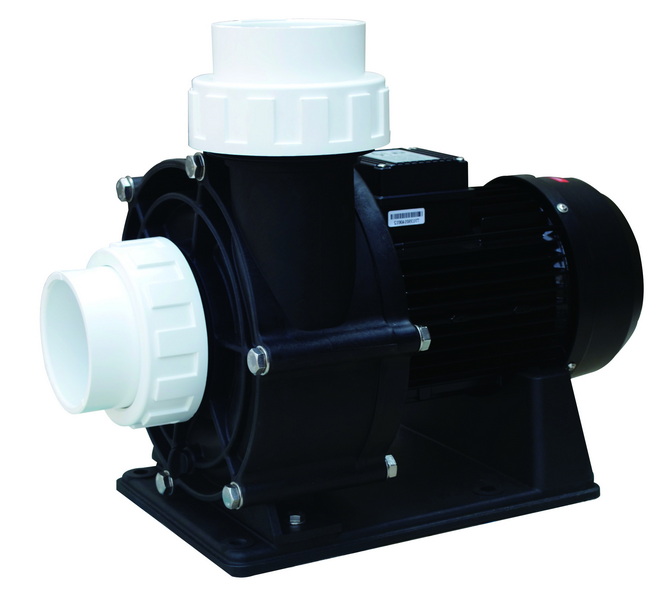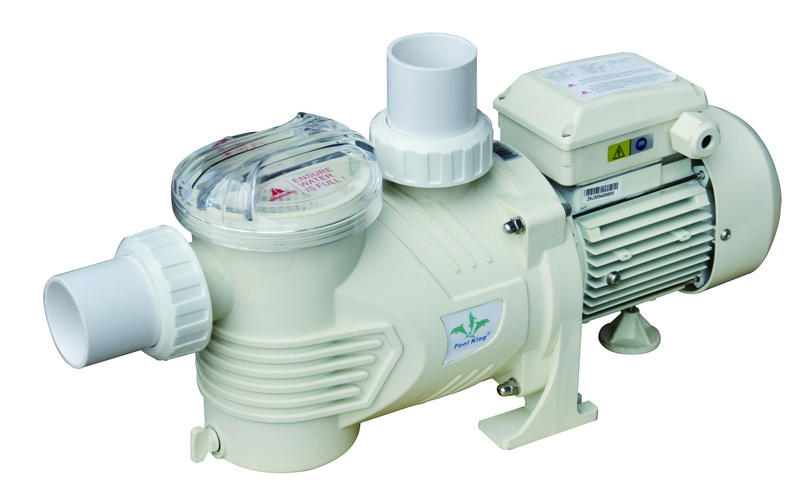Views: 222 Author: Tina Publish Time: 2025-10-11 Origin: Site








Content Menu
● Understanding Pool Pump Circulation
● Key Calculation: Determining Daily Run Time
>> Step 1: Measure Your Pool's Volume
>> Step 2: Find Your Pump's Flow Rate
>> Step 3: Calculate “Turnover” Time
● Recommended Daily Run Time: At a Glance
● Factors Affecting Pool Pump Run Time
>> Pool Type: Saltwater, Commercial, and Specialized Systems
● Advanced Tips for Energy Savings
>> Pool Covers and Robotic Cleaners
● Troubleshooting and Maintenance: Ensuring Pump Longevity
>> Essential Maintenance Steps
>> Common Pump Problems and Fixes
● Special Topic: Ultra-Efficient and Inverter Pool Pumps
● Maintenance Tips for Longevity
● Optimizing for Your Situation
● Summary Table: Recommended Pump Run Times
● Frequently Asked Questions (FAQ)
>> 1. Can I safely run my pool pump less than 8 hours a day?
>> 2. What's the advantage of a variable-speed or inverter pump?
>> 3. Should I run the pump after rain or heavy use?
>> 4. How should I maintain my pool pump for best results?
>> 5. Is it OK to run my pool pump at night?
>> 6. What problems signal my pump needs attention?
Maintaining sparkling, safe swimming pool water is a science—and central to this process is your pool pump, which powers the entire filtration system. The big question for pool owners, managers, and international OEM clients alike is: How often should you run a pool pump for peak efficiency, energy savings, and top-tier water quality? This definitive guide blends expert advice, practical calculation methods, visual aids, advanced maintenance strategies, and troubleshooting tips. Whether you operate a backyard pool or oversee large commercial installations, you'll learn everything to maximize performance and minimize cost.

The pool pump's primary role is to ensure that your pool's water circulates efficiently through filters—removing visible debris, microscopic contaminants, and circulating treatment chemicals. A properly timed pump cycle prevents algae growth, avoids stagnation, and guarantees health and clarity for all users.
- Suction: Water is drawn from the pool via skimmer and main drains.
- Filtration: Water passes through sand, DE, or cartridge filters, trapping debris and pathogens.
- Return: Filtered water cycles back into the pool, ready for safe enjoyment.
Pool water volume (in gallons or liters) sets the foundation for any circulation calculation. Use these formulas for common shapes, always measuring in feet (or meters):
| Pool Shape | Calculation Formula |
|---|---|
| Rectangular | Length × Width × Average Depth × 7.5 = Gallons |
| Round | Diameter × Diameter × Average Depth × 5.9 = Gallons |
| Oval | Length × Width × Average Depth × 6.7 = Gallons |
| Kidney-shaped | (A + B) × Length × 0.45 × Average Depth × 7.5 = Gallons (use widest points for A and B) |
Check your pump's label or manual for its rated flow rate, provided as gallons per minute (GPM) or gallons per hour (GPH).
Turnover means circulating the entire pool volume through the filter. Most residential pools need at least one turnover per day:

| Pool Size (Gallons) | Pump Flow Rate (GPH) | Minimum Daily Run Time (Hours) |
|---|---|---|
| 10,000 | 1,250 | 8 |
| 20,000 | 2,000 | 10 |
| 30,000 | 2,500 | 12 |
| Commercial Pool | Custom | 12–24 (higher turnover) |
Note that commercial pools and those with intensive use may require multiple turnovers daily, especially for health code compliance.
- Heavy use (parties, group swims) introduces more debris and bacteria, increasing the required runtime for proper turnover.
- Pools subject to frequent rain, wind, or falling leaves need more filtration time.
- Summer: Heat promotes bacteria and algae growth; aim for 8–12 hours daily.
- Spring/Fall: 6–8 hours may suffice, adjusting upward after storms or when pollen is heavy.
- Winter: 4–6 hours keeps water moving if not closing the pool.
Saltwater pools use an electrolysis cell for chlorination, which only works when the pump runs. Plan runtime so the salt cell operates long enough for optimal sanitation, typically 10–12 hours per day for residential pools.[2]
Commercial pools, spas, and splash pads follow stricter standards. High bather load and mandated chemical levels mean more frequent turnovers—sometimes every 6–8 hours, resulting in 12–24 hour pump operation.[2]

Modern variable-speed pool pumps adjust their speed and power for different tasks, such as slow filtration or fast cleaning. These units can cut energy costs by 50–80% compared to single-speed pumps. Running longer at reduced speed often uses less electricity than short high-speed bursts.
- ENERGY STAR® certified pumps cut energy use by up to 70% versus single-speed models.[3]
- Savings can reach $350+ USD per year for a typical home pool.[3]
Using a programmable timer or smart controller:
- Avoid peak energy hours for utility savings.
- Split operation into blocks: e.g., 4 hours morning, 6 hours evening.
- Consider local climate, as hot or windy afternoons may require extra filtration.
- Pool covers reduce debris inflow, preserving water and minimizing filtration time.
- Robotic cleaners pick up large debris with minimal energy use, allowing shorter pump cycles.[3]
Neglecting pump care can doom even the best filtration schedule. Here's a robust, seasonally adjusted maintenance checklist:
| Frequency | Tasks |
|---|---|
| Weekly | Skim debris, clean skimmer and pump baskets, check water return at jets, monitor pump sounds |
| Monthly | Inspect O-ring for cracks, clean pump basket, check vent blocks, assure full priming |
| 3–6 Months | Lubricate O-ring, inspect shaft seals, tighten bolts, clean motor exterior |
| Annually | Full internal inspection, replace seals/bearings, flush filter system |
Pre-Season Checklist:
- Clean strainer & skimmer baskets
- Inspect for leaks and damaged pipes
- Prime pump correctly
- Lubricate O-rings with quality silicone-based pool lube
- Clean/inspect impeller for clogging
- Pump Won't Start: Check the breaker, replace faulty capacitor, inspect wiring.[5][6]
- Low Water Flow: Prime pump, clear clogs, address air leaks, refill water to mid-skimmer level.[6]
- Leaks: Replace worn seals or O-rings quickly to avoid motor damage.[7]
- Noise: Usually means bearing failure or cavitation; repair or replace as needed.[7]
- Saltwater Specifics: Ensure cell is clean and operating correctly; run pump long enough for proper chlorination.[2]
Innovation in pump design now delivers dramatic improvements in energy consumption and quietness. Inverter-driven pumps “step” run speed to perfectly match demand, saving thousands of kilowatt-hours each year. These advanced systems also enable precise control and remote automation, ideal for both luxury residential installations and complex commercial applications.[8]
- Example: Aquagem's InverPro saves up to 8,000 kWh per year, quietly regulating speed for every job.[8]
- Environmental Impact: Cuts CO₂ emissions, supporting sustainability goals for public pools and resorts.[8]
Consistency is the hallmark of pump longevity:
- Regularly clean the pump basket and filters to prevent clogs and overheating; backwash sand and DE filters as needed, replace cartridge filters per manufacturer's schedule.[9]
- Maintain proper water chemistry: Keep pH at 7.4–7.6, calcium hardness 200–400 ppm, and sanitizer at recommended levels to minimize corrosion and scale buildup.[9]
- Routine Inspection: Check for leaks, prime pump correctly, lubricate O-rings and gaskets, and inspect impeller.[4]
- Prevent Overworking: Keep water free from excess debris and monitor for signs of strain or inefficiency.
- Lower volume, lighter usage means 6–8 hour daily runtime may be enough.
- Use covers and robotic cleaners to minimize cycling needs.
- Expect intense bather loads, heavy chemistry adjustment, and much stricter health codes.
- Factor in additional filtering cycles, possibly 2–3 complete turnovers daily.
- Salt cell must operate long enough to generate adequate sanitizer.
- Typically run pump 10–12 hours—even split over the day—to support the salt system.
| Pool Type/Lifestyle | Daily Run Time |
|---|---|
| Standard Home Use | 8–10 hours |
| Heavy Commercial Use | 12–24 hours |
| Variable-Speed Pump | 10–12 hours (on lower speed); 3–4 hours high speed for cleaning |
| Saltwater Pool | 10–12 hours |
| After Shocking/Chemicals | At least one full turnover, often overnight |
| Winterization/Minimal Use | 4–6 hours |
The optimal schedule for running your pool pump is determined by your pool's size, pump type, filtration system, and specific needs—from backyard family pools to commercial installations. The universal rule: circulate all water daily, with 8–12 hours as the baseline and adjustments for climate, use, and advanced salt systems. Prioritize seasonal maintenance, handle troubleshooting quickly, and invest in variable-speed or inverter technology for maximum savings and efficiency. These strategies ensure crystal-clear water, happy swimmers, and minimized energy expense all year round.

For small, lightly-used pools with advanced filtration, yes. But standard recommendations are at least 8 hours for a full turnover; use a pool calculator for exact results.[12]
These pumps save energy (50–80%), minimize noise, and allow longer, gentler filtration cycles at low power, reducing electricity bills dramatically.[10][3][8]
Definitely. More debris and possible contamination mean you should run your pump longer, possibly 12–24 hours until water clarity returns.[1]
Clean baskets and filters regularly, inspect O-rings and impellers, keep chemical balance in check, and lubricate seals per manufacturer instructions.[7][4][9]
Nighttime operation can save on energy costs if your utility offers peak/off-peak pricing. Ensure the total hours meet your turnover calculations.[3]
Low flow, leaks, noisy operation, or non-starting motor indicate maintenance or repair is needed; resolve quickly to avoid damage.[6][5]
[1](https://www.californiapools.com/blog/california-pools-blog/pool-maintenance-care/how-long-should-you-run-your-pool-pump-/)
[2](https://escapepools.com/optimum-length-and-time-of-day-to-run-a-pool-pump/)
[3](https://www.masssave.com/residential/shop-products/equipment/pool-pumps)
[4](https://lesliespool.com/blog/pre-season-checklist-pool-pump-maintenance.html)
[5](https://lesliespool.com/blog/pool-pump-troubleshooting-guide.html)
[6](https://www.swimuniversity.com/pool-pump-not-working/)
[7](https://sqone.com/blogs/news/pool-pump-maintenance-guide)
[8](https://www.aquagem.com/news/global-pool-pump-industry-report-ultra-efficient-pool-pump-solutions)
[9](https://poollogicsd.com/resources/how-to-extend-the-life-of-your-pool-pump/)
[10](https://lesliespool.com/blog/how-to-calculate-pool-pump-run-time.html)
[11](https://www.reddit.com/r/pools/comments/1ap8zqi/how_long_to_run_pump/)
[12](https://www.pvcfittingsonline.com/blogs/resource-center/how-often-should-i-run-my-pool-pump)
[13](https://starwatersystems.com/2025/08/04/pool-pump-maintenance/)
[14](https://sparklingclearpool.com/deep-dive-into-pool-pump-care-advanced-tips-and-hacks/)
[15](https://www.mtlakepool.com/2025/06/25/how-long-to-run-a-pool-pump-when-opening/)
[16](https://www.cliffspools.com/the-ultimate-guide-to-pool-cleaning-and-maintenance-in-2025/)
[17](https://www.1stdirectpools.com/blog/post/when-run-pool-pump-ultimate-guide)
[18](https://mrpoolman.com.au/blogs/news/the-only-pool-pump-troubleshooting-guide-you-ll-need)
[19](https://www.energystar.gov/products/pool_pumps)
[20](https://forum.mavaquadoc.com/index.php?threads%2Fpool-pump-selection-and-maintenance-tips.254%2F)
